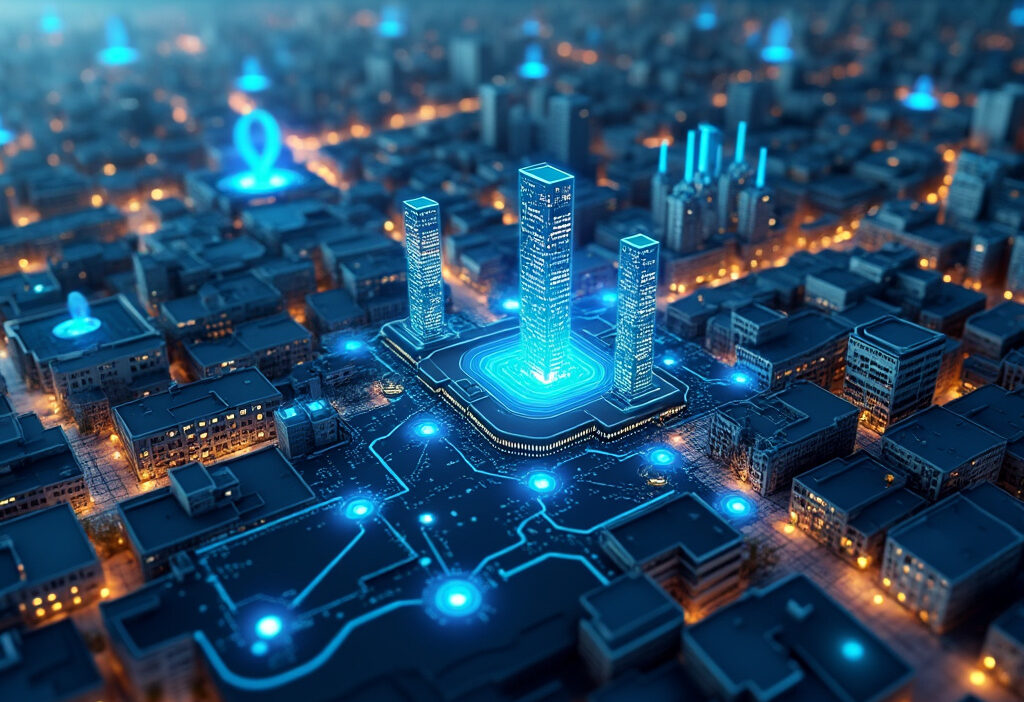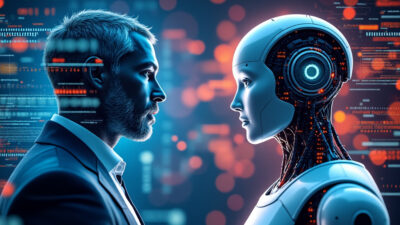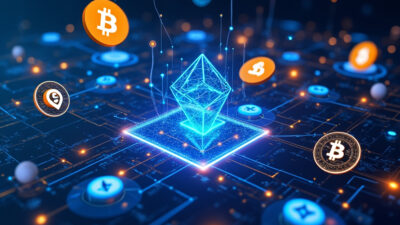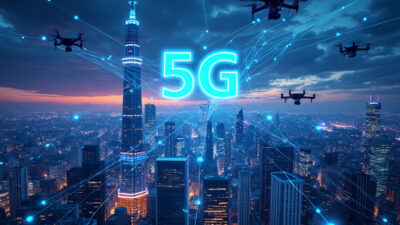Exploring the Internet of Things
The Internet of Things (IoT) represents a transformative phase in the digital era, where everyday objects are connected to the internet, enabling them to send and receive data. This innovation is reshaping industries, enhancing efficiency, and creating smarter environments. From smart homes to healthcare, IoT’s applications are vast and varied. This article explores the intricacies of IoT, its evolution, and its impact on our daily lives.
The Genesis of IoT
The concept of the Internet of Things (IoT) didn’t emerge overnight—it evolved over decades, shaped by visionaries and technological breakthroughs. The earliest inklings of IoT can be traced back to the 1980s, when researchers began exploring the idea of embedding sensors and intelligence into everyday objects. One of the first documented examples was a Coca-Cola vending machine at Carnegie Mellon University in 1982, modified to report its inventory and temperature over a network. Though primitive, it hinted at a future where devices could communicate autonomously.
The term Internet of Things itself was coined in 1999 by Kevin Ashton, a British technologist working on RFID (Radio-Frequency Identification) for supply chain management. Ashton envisioned a world where physical objects could be uniquely identified and connected via the internet, enabling seamless data exchange. Around the same time, advancements in wireless protocols like Bluetooth (1994) and Zigbee (1998) laid the groundwork for low-power, short-range communication between devices.
The early 2000s saw IoT gain momentum with the proliferation of IPv6, which solved the address scarcity problem of IPv4, allowing billions of devices to connect uniquely. Projects like MIT’s Auto-ID Center further standardized RFID and sensor networks, while companies like Nest (founded in 2010) brought IoT into homes with smart thermostats. Governments also played a role—South Korea’s u-City initiative and the EU’s Internet of Things—An Action Plan (2009) pushed IoT into urban infrastructure and policy.
These milestones set the stage for today’s IoT ecosystem, where connectivity is no longer a luxury but an expectation. The next chapter will delve into the underlying technologies that make this interconnected world possible.
How IoT Works
The Internet of Things (IoT) operates through a seamless integration of hardware, connectivity, and software, transforming raw data into actionable intelligence. At its core, IoT relies on sensors and actuators that capture real-world data—temperature, motion, light, or sound—and convert it into digital signals. These sensors act as the eyes and ears of IoT systems, enabling devices to perceive their environment. For example, a smart thermostat uses temperature and humidity sensors to adjust heating or cooling automatically.
Connectivity is the backbone that ties these sensors to the broader system. IoT devices communicate via wireless protocols like Wi-Fi, Bluetooth, Zigbee, or cellular networks (4G/5G). Each protocol serves different needs: Bluetooth Low Energy (BLE) is ideal for short-range, low-power wearables, while LoRaWAN supports long-range, low-bandwidth applications like agricultural sensors. The choice of connectivity depends on factors like range, power consumption, and data throughput.
Once data is transmitted, it undergoes processing and analysis, often in the cloud or at the edge (closer to the source). Edge computing reduces latency by processing data locally—crucial for time-sensitive applications like autonomous vehicles. Cloud platforms, such as AWS IoT or Azure IoT, handle large-scale data aggregation, applying machine learning to detect patterns or predict failures.
Finally, user interfaces—mobile apps, dashboards, or voice assistants—deliver insights or enable control. For instance, a smart home system might notify a user about an open door via a smartphone alert. Together, these components form a feedback loop where sensors collect data, networks transmit it, algorithms analyze it, and actions are taken—either automatically or through user intervention. This orchestration of technologies is what makes IoT systems smart, bridging the physical and digital worlds.
IoT in Everyday Life
The Internet of Things (IoT) has seamlessly integrated into our daily lives, transforming ordinary objects into intelligent, connected devices that enhance convenience and efficiency. From smart homes to wearables and connected cars, IoT applications are redefining how we interact with technology.
In smart homes, IoT-enabled devices like thermostats, lighting systems, and security cameras learn user preferences and automate routines. For example, a smart thermostat adjusts the temperature based on occupancy patterns, reducing energy waste. Voice assistants like Amazon Alexa or Google Home act as centralized hubs, allowing users to control multiple devices through simple commands. These systems not only improve comfort but also contribute to sustainability by optimizing resource usage.
Wearables, such as fitness trackers and smartwatches, collect real-time health data like heart rate, sleep patterns, and activity levels. This data is processed locally or in the cloud to provide actionable insights, empowering users to make informed health decisions. Advanced wearables even detect anomalies, alerting users to potential medical issues before they escalate.
The automotive industry has embraced IoT through connected cars, which leverage sensors and connectivity for features like real-time navigation, predictive maintenance, and autonomous driving. These vehicles communicate with traffic systems to optimize routes, reducing congestion and emissions. Additionally, emergency response systems automatically alert authorities in case of accidents, improving safety.
By bridging the physical and digital worlds, IoT applications in everyday life simplify tasks, enhance safety, and promote efficiency. As these technologies evolve, their impact will deepen, paving the way for even smarter, more intuitive interactions in our connected world.
Industrial IoT
The Industrial Internet of Things (IIoT) represents a transformative shift in how industries operate, leveraging connected devices, sensors, and data analytics to optimize processes, reduce downtime, and enhance productivity. Unlike consumer IoT, which focuses on convenience, IIoT is driven by efficiency, scalability, and precision, making it a cornerstone of modern industrial ecosystems.
In manufacturing, IIoT enables predictive maintenance, where sensors monitor equipment health in real time, detecting anomalies before failures occur. This minimizes unplanned downtime and extends machinery lifespan. Smart factories employ interconnected systems to automate production lines, adjusting workflows dynamically based on demand or resource availability. For example, robotic arms equipped with IoT sensors can collaborate seamlessly with human workers, improving both speed and safety.
Agriculture has also embraced IIoT through precision farming. Soil moisture sensors, drones, and GPS-guided tractors collect data to optimize irrigation, fertilization, and pest control. Farmers gain actionable insights, reducing waste while maximizing yield. Livestock monitoring via wearable IoT devices tracks health metrics, ensuring early disease detection and better herd management.
In logistics, IIoT revolutionizes supply chain visibility. GPS and RFID tags provide real-time tracking of shipments, while smart warehouses use automated guided vehicles (AGVs) and IoT-enabled inventory systems to streamline storage and retrieval. Temperature and humidity sensors ensure perishable goods remain in optimal conditions during transit, reducing spoilage.
The convergence of IIoT with AI and edge computing further amplifies its impact, enabling faster decision-making at the source of data generation. As industries continue to adopt these technologies, the boundary between physical and digital operations blurs, paving the way for fully autonomous industrial ecosystems.
IoT and Healthcare
The integration of Internet of Things (IoT) into healthcare is transforming the industry by enabling smarter, more efficient, and patient-centric care. Unlike industrial IoT, which focuses on automation and productivity, healthcare IoT prioritizes real-time monitoring, data-driven diagnostics, and personalized treatment. Wearable devices, such as smartwatches and fitness trackers, continuously collect vital signs like heart rate, blood pressure, and glucose levels, transmitting this data to healthcare providers for remote analysis. This reduces the need for frequent hospital visits and allows for early detection of potential health issues.
Hospitals are leveraging IoT through smart medical devices, such as connected infusion pumps and ventilators, which automatically adjust dosages or settings based on patient needs. These devices minimize human error and improve treatment accuracy. Additionally, IoT-enabled telemedicine platforms facilitate virtual consultations, making healthcare accessible to rural and underserved populations.
One of the most groundbreaking applications is in chronic disease management. Patients with conditions like diabetes or hypertension use IoT-enabled glucometers and blood pressure cuffs that sync with mobile apps, providing doctors with real-time insights. Predictive analytics, powered by IoT data, can forecast health deteriorations before symptoms arise, enabling proactive interventions.
However, the rapid adoption of IoT in healthcare raises concerns about data security and interoperability, a challenge that will be explored in the next chapter. Despite these hurdles, IoT’s potential to enhance patient outcomes, reduce costs, and streamline workflows makes it a cornerstone of modern healthcare innovation. The shift from reactive to preventive care underscores IoT’s revolutionary impact on the industry.
Security Challenges in IoT
The rapid expansion of the Internet of Things (IoT) has introduced a complex web of security challenges, as interconnected devices often lack robust protection mechanisms. Many IoT devices, from smart home gadgets to industrial sensors, are designed with convenience and functionality in mind, leaving security as an afterthought. This oversight creates vulnerabilities that malicious actors can exploit, leading to data breaches, unauthorized access, and even large-scale cyberattacks.
One of the most pressing concerns is privacy. IoT devices collect vast amounts of sensitive data, from personal health metrics to home security footage. Without proper encryption or access controls, this data can be intercepted or misused. For example, unsecured smart cameras have been hacked to spy on users, while weak authentication in medical IoT devices could expose patient records.
Another critical issue is the lack of standardization in IoT security protocols. Many manufacturers prioritize cost and speed-to-market over security, resulting in devices with default passwords, outdated firmware, and unpatched vulnerabilities. The infamous Mirai botnet attack exploited such weaknesses, turning thousands of IoT devices into a weapon for distributed denial-of-service (DDoS) attacks.
To mitigate these risks, efforts are underway to strengthen IoT security. Regulatory frameworks like the EU’s Cybersecurity Act and NIST’s IoT security guidelines push for stricter compliance. Additionally, advancements in end-to-end encryption, blockchain for device authentication, and AI-driven threat detection are helping secure IoT ecosystems. Manufacturers are also adopting secure-by-design principles, ensuring security is embedded from the development phase.
As IoT continues to evolve, addressing these vulnerabilities will be crucial to maintaining trust and enabling safer, more resilient connected systems. The next chapter will explore how emerging technologies like edge computing and AI could further shape IoT’s future.
The Future of IoT
The rapid evolution of IoT technology is poised to reshape industries and daily life, driven by advancements in edge computing and AI integration. As devices become smarter and more autonomous, the shift from centralized cloud processing to decentralized edge computing will reduce latency and bandwidth demands, enabling real-time decision-making. This is critical for applications like autonomous vehicles, smart cities, and industrial automation, where milliseconds matter.
AI will further amplify IoT’s potential by enabling predictive analytics and adaptive systems. For instance, machine learning algorithms can analyze vast datasets from sensors to optimize energy usage in smart grids or predict equipment failures in manufacturing. The convergence of AI and IoT will also personalize user experiences, from healthcare wearables that adjust treatment plans in real-time to smart homes that learn occupants’ habits.
Societal impacts will be profound. Smart cities could reduce traffic congestion and pollution, while precision agriculture may enhance food security. However, these benefits come with challenges. The proliferation of connected devices raises questions about data ownership and algorithmic bias, linking directly to the ethical dilemmas discussed in the next chapter. Additionally, as IoT systems grow more complex, ensuring interoperability and security—without stifling innovation—will require robust regulatory frameworks.
Looking ahead, quantum computing and 6G networks could unlock new IoT capabilities, such as ultra-secure communication and near-instantaneous data processing. Yet, as IoT becomes ubiquitous, society must balance technological progress with inclusivity and sustainability, ensuring advancements benefit all rather than exacerbating digital divides. The future of IoT isn’t just about smarter devices—it’s about building a connected world that’s equitable, resilient, and human-centric.
Regulatory and Ethical Considerations
As IoT continues to evolve, regulatory and ethical considerations become increasingly critical. Governments and organizations worldwide are grappling with how to balance innovation with consumer protection, ensuring that IoT devices are secure, privacy-respecting, and ethically deployed.
Regulatory Frameworks
The lack of a unified global standard for IoT regulation has led to fragmented policies. The EU’s General Data Protection Regulation (GDPR) sets a high bar for data privacy, requiring IoT manufacturers to implement stringent security measures. In the U.S., the IoT Cybersecurity Improvement Act mandates baseline security requirements for federal IoT devices, but broader legislation remains sparse. Meanwhile, countries like Singapore and Japan are developing IoT-specific guidelines to address vulnerabilities in smart infrastructure.
Ethical Dilemmas
IoT raises profound ethical questions, particularly around surveillance and autonomy. Smart devices collect vast amounts of personal data, often without explicit user consent. For instance, voice assistants may record private conversations, while smart cities could enable mass tracking. The ethical use of AI in IoT—such as predictive policing or automated decision-making—further complicates matters, as biases in algorithms may perpetuate discrimination.
Balancing Innovation and Protection
Striking the right balance is challenging. Overregulation could stifle innovation, but lax standards risk consumer harm. A middle ground involves privacy-by-design principles, where security is embedded into IoT devices from inception. Transparency in data collection and user control over personal information are also essential. Industry collaboration, such as the IoT Security Foundation’s best practices, can help bridge gaps without heavy-handed mandates.
As IoT ecosystems expand—discussed in the next chapter—these considerations will shape how trust is built between users, developers, and regulators. Without addressing these issues, the potential of IoT could be undermined by misuse or public backlash.
Building an IoT Ecosystem
Building an IoT ecosystem requires careful planning and execution to ensure seamless connectivity, scalability, and security. The process begins with device selection, where factors like power efficiency, processing capability, and communication protocols must align with the project’s goals. For instance, low-power devices like sensors may use LoRaWAN for long-range connectivity, while high-bandwidth applications might rely on Wi-Fi or 5G.
Once devices are chosen, the next step is network infrastructure. A robust network ensures reliable data transmission, whether through wired, wireless, or hybrid solutions. Edge computing can be integrated to process data locally, reducing latency and bandwidth consumption.
Data management is a critical pillar of IoT ecosystems. Raw data from devices must be collected, filtered, and stored efficiently. Cloud platforms like AWS IoT or Azure IoT Hub offer scalable solutions for data aggregation and real-time analytics. However, organizations must also implement strong encryption and access controls to protect sensitive information.
Interoperability is key to a successful IoT deployment. Devices and systems from different vendors must communicate seamlessly, often achieved through standardized protocols like MQTT or CoAP. Open-source frameworks and middleware can bridge compatibility gaps, ensuring smooth integration across diverse components.
Finally, continuous monitoring and optimization are essential. IoT ecosystems evolve, requiring regular updates to firmware, security patches, and performance tuning. Analytics tools can identify inefficiencies, enabling proactive improvements.
By focusing on these steps—device selection, network design, data handling, interoperability, and maintenance—businesses can build resilient IoT ecosystems that drive innovation while aligning with regulatory and ethical standards discussed earlier. The next chapter will showcase real-world examples of such ecosystems delivering measurable impact.
IoT Success Stories
The Internet of Things (IoT) has transformed industries by enabling smarter operations, reducing costs, and improving efficiency. Here, we explore real-world IoT success stories that highlight its transformative potential.
In agriculture, John Deere’s IoT-enabled tractors and sensors have revolutionized farming. These devices collect soil moisture, weather, and crop health data, allowing farmers to optimize irrigation and fertilization. The result? A 20% increase in crop yields while reducing water usage by 30%. This precision agriculture approach demonstrates how IoT can make resource-intensive industries sustainable.
The healthcare sector has also benefited immensely. Philips’ IoT-powered remote monitoring systems allow doctors to track patients with chronic conditions in real time. One hospital network reduced readmission rates by 15% by detecting early warning signs and intervening proactively. Such implementations show how IoT bridges gaps in patient care while cutting costs.
Manufacturing has seen dramatic improvements through IoT. Siemens’ Smart Factory initiative uses connected sensors to monitor equipment health, predicting failures before they occur. This predictive maintenance reduced downtime by 25% and boosted production efficiency. The lesson? IoT-driven automation isn’t just about data—it’s about actionable insights that drive productivity.
In smart cities, Barcelona’s IoT-powered streetlights and waste management systems have saved millions. Sensors adjust lighting based on foot traffic, while smart bins optimize collection routes, cutting costs by 30%. These projects highlight how IoT can enhance urban living while promoting sustainability.
Each case underscores a key takeaway: successful IoT implementations require clear objectives, seamless integration, and a focus on measurable outcomes. The next chapter will explore the challenges and risks of IoT adoption, ensuring a balanced perspective on this connected revolution.
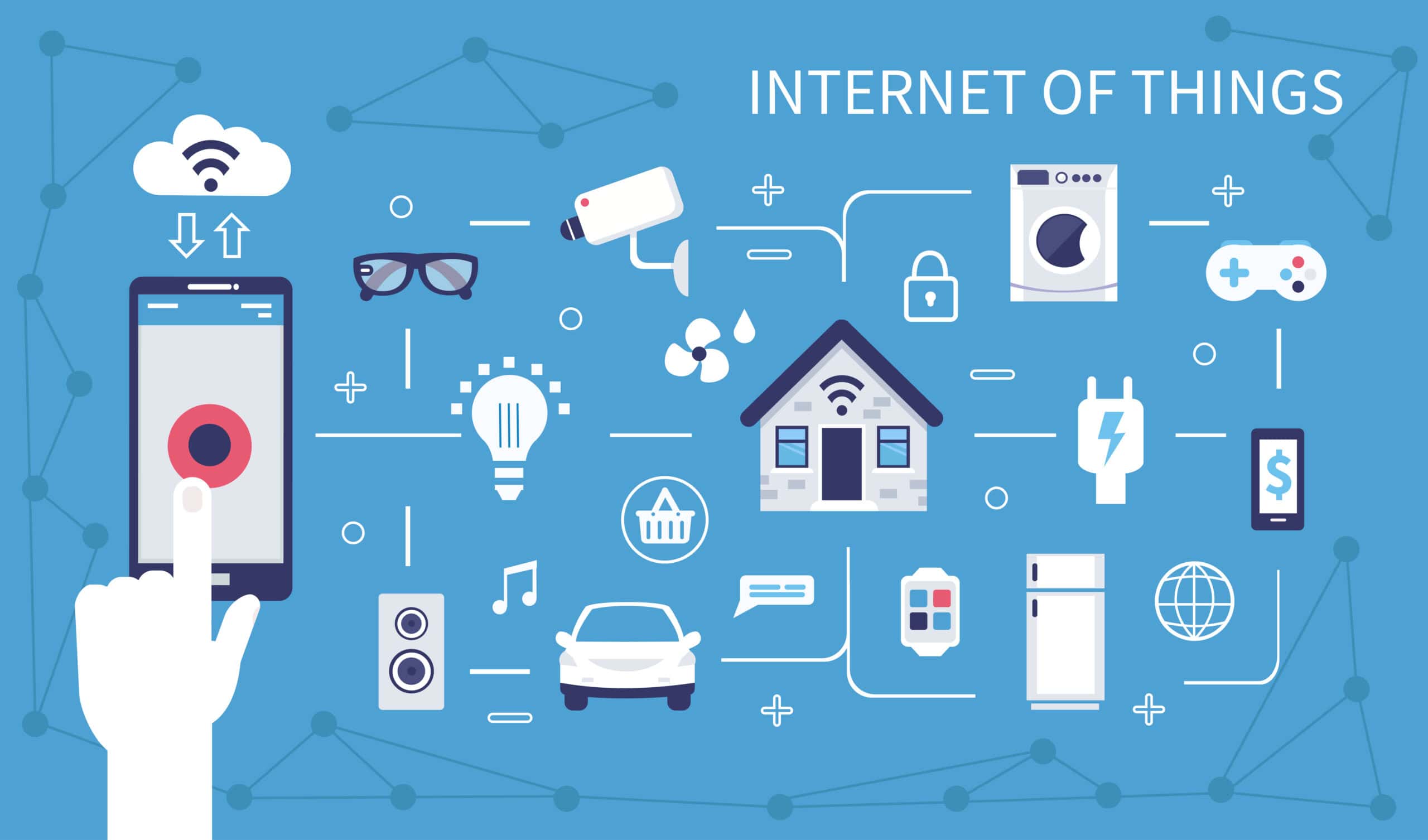
Conclusions
The Internet of Things is not just a technological trend but a cornerstone of the digital future. By connecting the unconnected, IoT offers unprecedented opportunities for innovation and efficiency. However, as we embrace this connected world, addressing security, privacy, and ethical concerns remains paramount. The journey of IoT is just beginning, and its full potential is yet to be unlocked.
